 |
Clutch or brake first when stopping or
slowing down?
If you're a new driver, you might be wondering which pedal to press first when stopping or slowing down - the clutch or brake. It's completely natural to feel a bit confused or uncertain about this, but don't worry, we're here to help!
To make things easier for you, we've got a helpful video that provides visual demonstrations of the proper technique for stopping your vehicle. It will show you exactly which pedal to press first, so you can confidently navigate the roads.
Remember, as a new driver, it's important to take your time and practice your driving skills until you feel comfortable and confident behind the wheel. With a bit of practice and guidance, you'll soon be cruising around like a pro.
So, sit back, relax, and check out the video below. We're confident it will provide you with all the information you need to tackle this important driving skill with ease.
|
|
Video on which pedal first... brake or clutch?
Subscribe for more tips on our YouTube channel
|
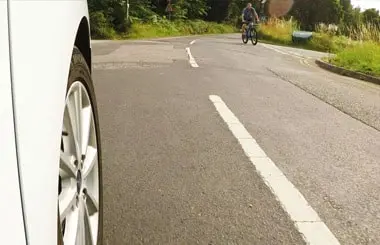
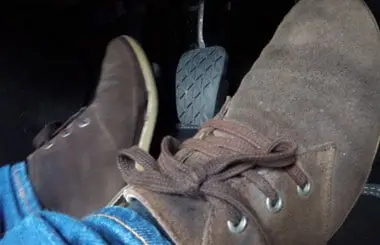
|
Which pedal first when stopping or slowing down?
It all depends on the speed you're driving and if you're going uphill.
Firstly, it's important to know why you need to press the clutch down before stopping. Without getting too technical as there's lots of other videos and information on the internet about that already, you simply need to press the clutch down before stopping or the car will stall.
You'll normally feel the car start to shake before it stalls. If you feel it shaking then press the clutch down quickly and you should save it from stalling.
But to prevent it from stalling in the first place you'd normally fully press the clutch down roughly two car lengths before you come to a complete stop. |
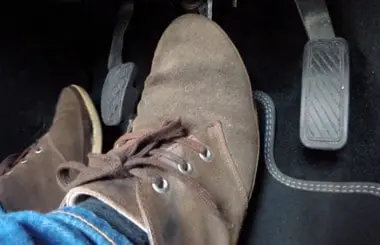
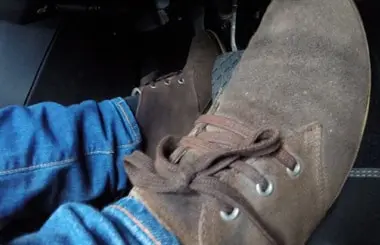
|
Driving fast.
For example, if you're driving above 25mph in 3rd gear and want to stop then the main priority because of the speed is to slow down. Release the gas pedal and press the brake. Second priority is not to stall. Press the clutch down roughly 2 car lengths before stopping completely.
Driving slowly.
If you're driving slowly below 10mph and want to stop then press the clutch before the brake so that the car doesn't stall.
You're more likely to stall or have a shaky stop if you're driving slowly below 10mph and press the brake first then clutch.
You can also press both the clutch and brake at the same time when you're driving slowly if needed.
Uphill.
If you're driving uphill and want to stop then come off gas and let gravity slow you down, the uphill is acting almost as a brake. Press the clutch about 2 car lengths before stopping and then brake.
|
Can't you just press the clutch before the brake every time?
Well then you could be coasting which is making the car freewheel and it could increase speed which means that you'll have to brake more. You lose engine braking. |
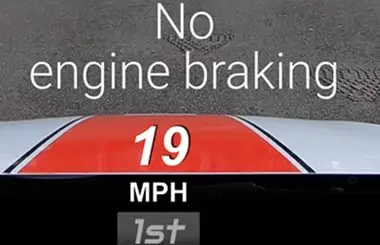 |
Don't forget...
Driving slowly, clutch then brake when stopping.
Driving faster, brake then clutch down.
Slowing down but not stopping?
If you just want to slow down and not stop then release the gas pedal and brake if needed but you won't need to press the clutch unless you have to change gear. |
 |
 |
 |
| Finding a good driving school is difficult, find out here why you've just discovered one of the best ones... (click) |
Refresher driving lessons are getting more and more popular, find out more about it here... (click) |
Intensive lessons for people wanting to learn to drive quick. Click here to find out if you're up for it... (click) |
|
|
|

